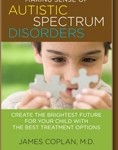ASD, Asperger Syndrome and Crime: Innocent Offending

Impaired Theory of Mind and cognitive rigidity are the hallmark traits of Autism Spectrum Disorder.
First think about Theory of Mind: Our realization that other people have their own inner mental and emotional lives, and our ability to formulate an educated guess as to what other people are thinking or feeling at any given moment. Theory of Mind is what enables us to see the world from another person’s point of view. Theory of Mind is also what enables us to recognize the impact of our behavior on others. Without Theory of Mind, the behavior of other people becomes inscrutable. Likewise, knowing what to do, even in the simplest of situations, is often elusive. In the office, I administer a series of flash cards which the child is supposed to copy, one by one. Children with neurotypical development automatically look up after they’ve completed each card. Children on the spectrum often do not. Whenever a child fails to look up, I ask “How am I supposed to know you’re ready for another card?” One child on the autism spectrum pondered the question and replied quizzically (without looking up) “Because my pencil has stopped moving?” I asked another patient – a teenage boy with high functioning autism — “Did you know that you can tell me you’re done just by looking up, without saying anything?” “No,” he replied in a formal sort of way, “Nobody ever taught me that.”
Next, consider Cognitive Rigidity. At its simplest, cognitive rigidity means getting “stuck.” This can take the form of obsessive thinking, perfectionism, or extreme distress when the person’s expectations are not met. Sometimes these expectations revolve around activities or events, as when Rainman becomes distraught because he’s unable to watch his favorite TV show. Sometimes, these expectations revolve around objects (as when a child becomes frantic if a particular Lego piece goes missing). And sometimes these expectations revolve around behavior – as when a child with ASD becomes the “playground policeman,” attempting to impose his view of correct behavior on his peers.
Now combine these two traits.
Impaired Theory of Mind plus Cognitive Rigidity is the recipe for what I call “Innocent Offending.” Rarely, a person with AS may do harm to another individual out of intellectual curiosity – “to see what happens.” If a person with ASD is obsessed with something, he (or she?) may steal items of that category. If the obsession is with a person, it may lead to stalking, or unwelcome sexual advances. An obsession with fire may lead to recurrent fire-setting.
(The research literature, e.g. Woodbury-Smith 2014, is woefully incomplete.) There has been at least one famous example of an individual with AS who engaged in computer hacking as an expression of his atypicality (here: http://en.wikipedia.org/wiki/Gary_McKinnon and here: http://spectrum.ieee.org/telecom/internet/the-autistic-hacker/0 ).
Despite his ability to hack into highly “secure” systems, this individual gave little thought to covering his own tracks, calling to mind Murrie’s comments about social naiveté in offenders with AS.
The foregoing are examples of what I call “Innocent Offending.” Innocent offending in persons on the autism spectrum stems from the combination of intense interests plus lack of awareness of the impact of one’s behavior on others, and corresponds to varying combinations of traits summarized by Wing and Murrie:
* Assumption that his or her own needs supersede all other considerations
* Lack of awareness of wrongdoing
* Intellectual interest
* Pursuit of “special” interests
* Interpersonal Naiveté
* Sexual Frustration
(Click On Graph To Enlarge.)
Innocent Offending. The person with ASD may act in ways that are inappropriate, but is unaware of the fact that he (or she) has crossed a line.
What other pathways might there be? More next time.
References
Murrie DC, Warren JI, and Kristiansson M. Asperger’s syndrome in forensic settings. Int J Forensic Ment Health 1:59–70, 2002
Wing, L. (1997). Asperger’s syndrome: Management requires diagnosis. Journal of Forensic Psychiatry, 8(2), 253-257
Woodbury-Smith, M. Unlawful behavior in adolescents and adults with autism spectrum disorders. In Adolescents and Adults with Autism Spectrum Disorders, Springer, 2014, pp 260-281.

James Coplan, MD is an Internationally recognized clinician, author, and public speaker in the fields of early child development, early language development and autistic spectrum disorders.














Leave a Reply